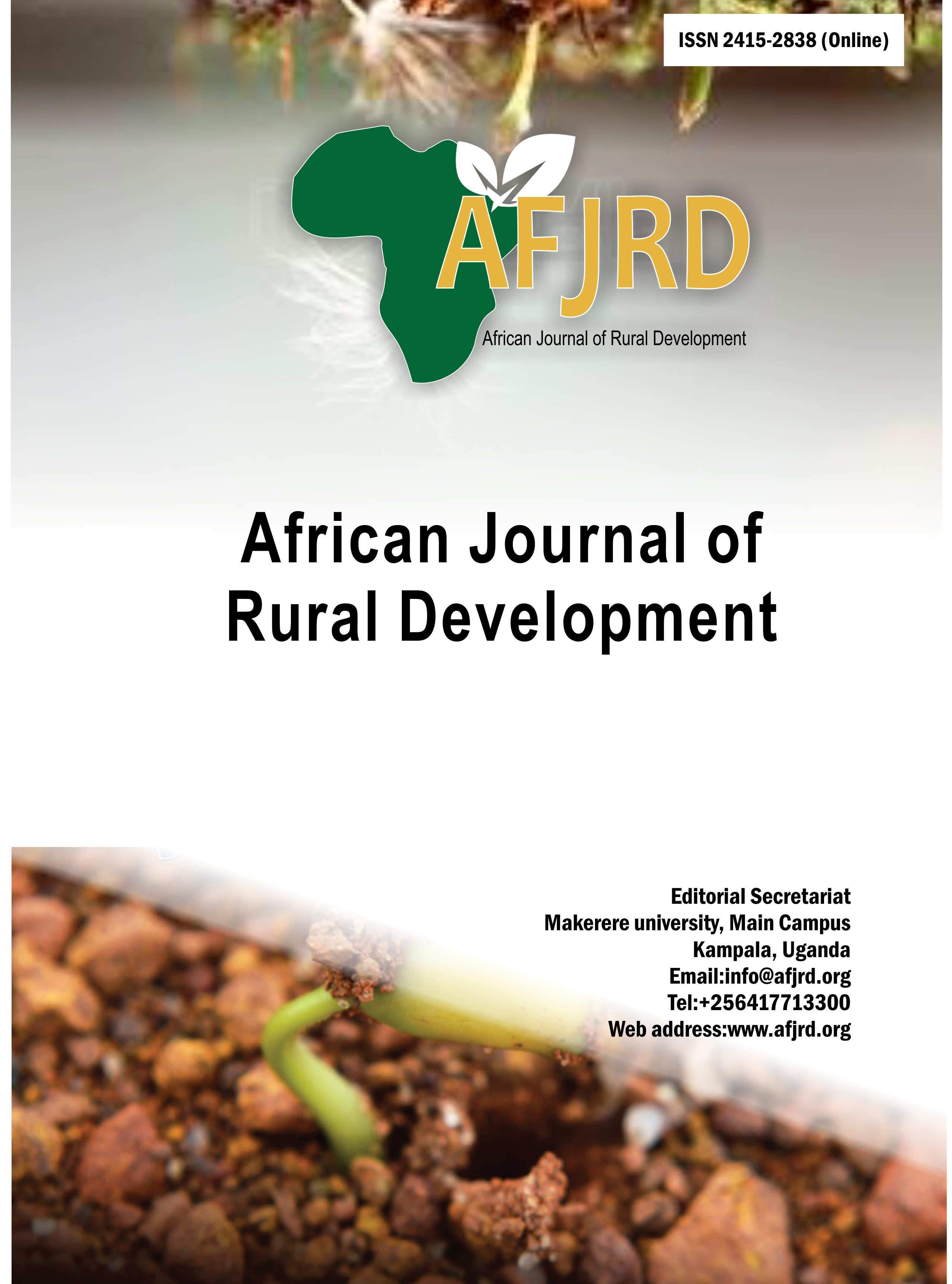Efficiency estimation and determinant in Small-scale Dairy Production in Eritrea
Main Article Content
Abstract
The Eritrea dairy sector provides livelihood for over 70% of the population. However, this sector is still at its subsistence level. Therefore, improving the sector requires that farm-level efficiency is determined for sustainability. Three regions- were selected for the study. Using deterministic and stochastic frontier methods, the technical (T), allocative (A) and profit/economic (E) efficiencies (E) of small-scale dairy farmers were estimated. Results show that feed, concentrates, labour and herd size were important inputs required for TE. Adding medication/vaccination increased EE of small-scale dairy farmers. TE and AE levels of Eritrea, Anseba, Debub and Maekel were low, ranging from 31.57% - 40.65%, and 12.23 - 38.00%, respectively. However, the EE was above 50% in Eritrea (67.60%), Anseba (71.17%) and Maekel (93.39%) - except in Debub (32.24%). While years of dairy experience, cooperative membership, use of agricultural extension service and native of Maekel reduced technical inefficiencies, the number of household female members and milking cows twice daily increased technical inefficiencies. Age and educational level of farmer, size of land mapped out for food production, extensive method of dairy farming and native of Debub increased economic inefficiencies. Based on findings, interventions/projects should target increasing herd size of farmers, expanding agricultural advice service to provide innovative and market information to small-scale dairy farmers. Policies aimed at increasing land size allocated for animal feed and concentrates should be enacted and farmers should be encouraged to join/form cooperatives for easy access to dairy inputs and strong bargaining power.
Key words: Diary Production, Eritrea, technical efficiency
Article Details

This work is licensed under a Creative Commons Attribution 4.0 International License.
